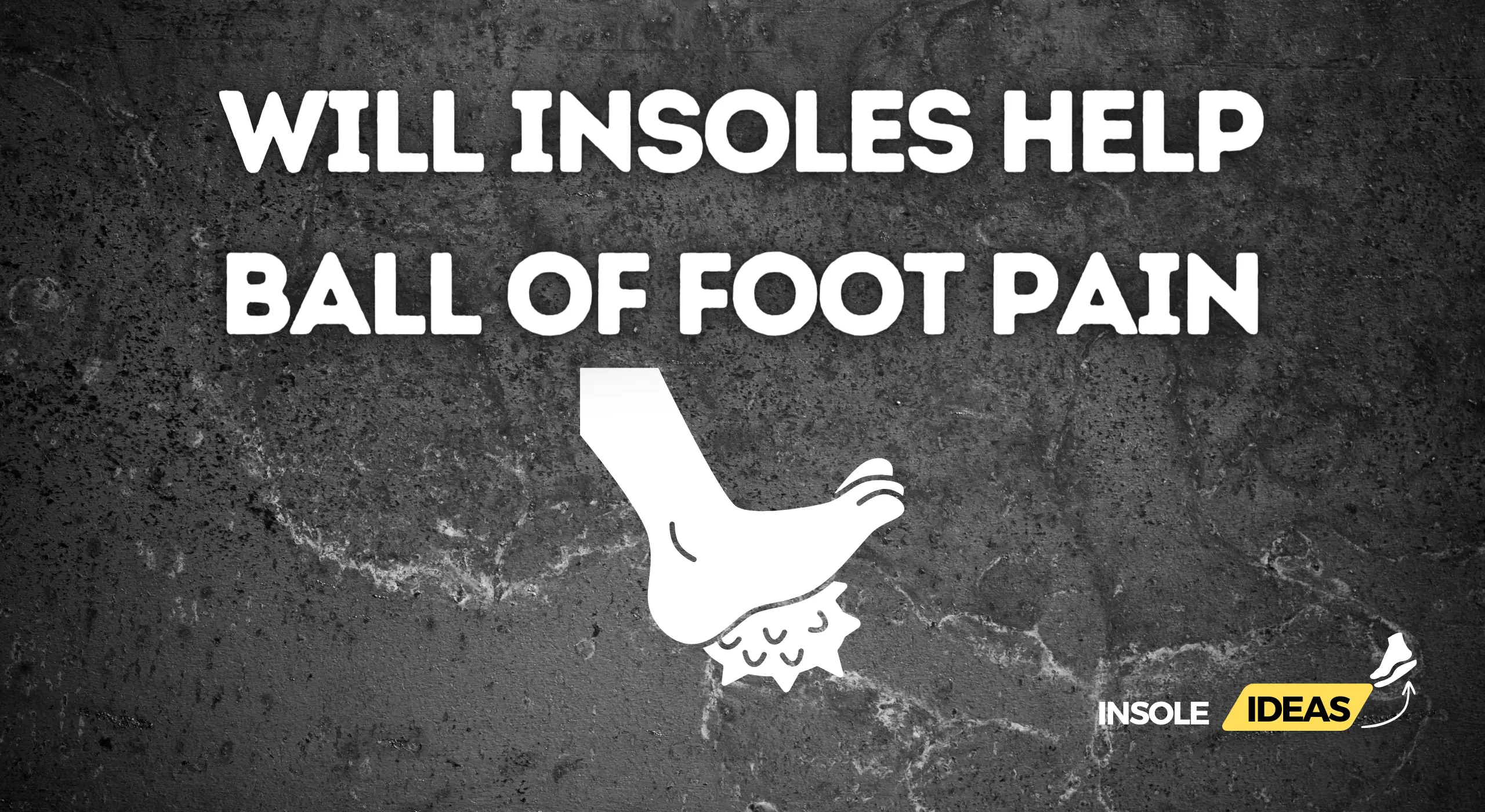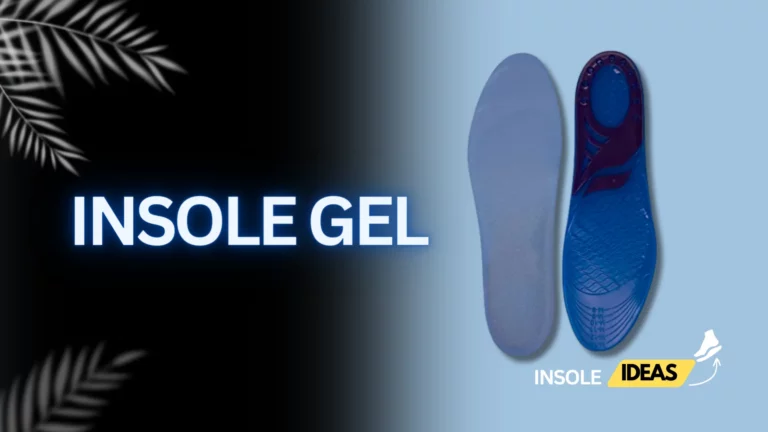Exploring the Role of Insoles in Alleviating Ball of Foot Pain
Explanation of Ball of Foot Pain
Ball of foot pain, or metatarsalgia, is a common foot condition characterized by discomfort or pain in the area between the toes and the foot arch. Various factors, including overuse, improper footwear, high-impact activities, and foot deformities, can cause this condition. Ball of foot pain can range from mild to severe and may significantly impact mobility and quality of life.
Purpose of Insoles in Addressing Foot Pain
Insoles, also known as shoe inserts or orthotics, are devices placed inside shoes to provide additional support, cushioning, and alignment. The purpose of insoles in addressing foot pain, including ball of foot pain, is to redistribute pressure, improve shock absorption, and provide support to alleviate discomfort and promote proper foot mechanics. Insoles come in various materials and designs to cater to different foot types and conditions, offering customized solutions for individuals experiencing foot pain.
Understanding Ball of Foot Pain
Definition and Common Causes
Ball of foot pain refers to discomfort or pain in the area behind the toes, specifically at the heads of the metatarsal bones. Common causes of a ball of foot pain include:
- Metatarsalgia (inflammation of the metatarsal heads)
- Morton’s neuroma (thickening of the tissue around a nerve between the toes)
- Capsulitis (inflammation of the ligaments surrounding the joint)
- Sesamoiditis (inflammation of the sesamoid bones)
- Frequent wearing of high heels or shoes with narrow-toe boxes
Symptoms and Effects on Daily Activities
Symptoms of the ball of foot pain may include:
- Sharp or aching pain in the ball of the foot
- Burning or tingling sensation
- Swelling or inflammation
- Difficulty walking or standing for prolonged periods
- Discomfort exacerbated by wearing specific shoes or engaging in high-impact activities
Ball of foot pain can significantly impact daily activities such as walking, standing, and exercising. It may limit mobility, cause discomfort during weight-bearing activities, and affect overall quality of life. Proper diagnosis and management are essential for addressing foot pain and preventing complications.
Mechanism of Action of Insoles
How Insoles Provide Support and Cushioning
Insoles provide additional support and cushioning to the foot, which can help alleviate pressure and reduce discomfort, particularly in the ball of the foot region. Here’s how insoles work to provide support and cushioning:
- Shock absorption: Insoles are often made from materials such as foam, gel, or silicone, which absorb impact forces during walking or running, reducing the strain on the ball of the foot.
- Even distribution of pressure: Insoles help distribute the body’s weight more evenly across the entire foot, preventing excessive pressure on specific areas like the ball.
- Stabilization: Some insoles feature rigid or semi-rigid components that help stabilize the foot and promote proper alignment, reducing the risk of overpronation or supination that can contribute to a ball of foot pain.
Alignment Benefits for Reducing Pressure on the Ball of the Foot
Proper alignment of the foot is crucial for reducing pressure on the ball of the foot and preventing discomfort. Insoles can help achieve better alignment by:
- Arch support: Insoles with built-in arch support help maintain the natural arch of the foot, which can prevent excessive flattening of the arch and alleviate pressure on the ball of the foot.
- Metatarsal support: Some insoles include pads or inserts that support the metatarsal heads, redistributing pressure away from the football.
- Heel cushioning: Insoles with extra cushioning in the heel area can help absorb shock and reduce the impact forces transmitted to the ball of the foot during walking or running.
Types of Insoles for Ball of Foot Pain
Cushioned Insoles
Cushioned insoles are designed to provide additional padding and shock absorption, which can help reduce pressure and alleviate discomfort in the football. These insoles are typically made from soft materials such as foam or gel and are ideal for individuals seeking extra cushioning and support.
Research and Evidence
Studies Supporting the Effectiveness of Insoles
Numerous studies have investigated the effectiveness of insoles in managing ball of foot pain, with many demonstrating positive outcomes. Here are some key findings from research supporting the use of insoles:
- A study published in the Journal of Orthopaedic & Sports Physical Therapy found that custom-made foot orthoses significantly reduced pain and improved function in individuals with metatarsalgia.
- Research published in the British Journal of Sports Medicine concluded that prefabricated insoles with metatarsal pads effectively reduced pain and improved function in patients with metatarsalgia.
- A systematic review published in the Journal of Foot and Ankle Research found strong evidence supporting insoles for reducing pain and improving foot function in various conditions, including metatarsalgia.
Testimonials and Anecdotal Evidence
In addition to scientific studies, many individuals have reported positive experiences using insoles to alleviate foot pain. Testimonials and anecdotal evidence from users often highlight the following:
- Reduction in pain and discomfort during weight-bearing activities such as walking, running, or standing for extended periods.
- We have improved overall foot comfort and mobility using supportive insoles.
- Enhanced ability to engage in daily activities without experiencing debilitating foot pain.
- Positive changes in foot mechanics and alignment lead to reduced strain on the ball of the foot.
Recommendations and Best Practices
When to Consider Using Insoles for Ball of Foot Pain
Insoles can benefit individuals experiencing ball of foot pain due to various factors such as overuse, improper footwear, or foot deformities. Consider using insoles when:
- You experience pain, discomfort, or swelling in the ball of your foot, especially during weight-bearing activities.
- Your current footwear does not provide adequate support or cushioning for the ball of your foot.
- You have been diagnosed with conditions such as metatarsalgia, Morton’s neuroma, or capsulitis.
Choosing the Right Type of Insoles
Selecting the appropriate type of insoles is essential for effectively managing ball of foot pain. Consider the following factors when choosing insoles:
- The specific cause of your foot pain (e.g., high arches, overpronation, metatarsalgia).
- The level of support and cushioning needed to alleviate discomfort in the ball of the foot.
- Your footwear preferences and activity level (e.g., running shoes, dress shoes, work boots).
Proper Fitting and Usage Tips
Proper fitting and usage of insoles are crucial for maximizing their effectiveness and preventing further foot issues. Follow these tips for proper fitting and usage:
- Ensure that the insoles fit comfortably inside your shoes without causing any additional pressure points or discomfort.
- Replace worn-out or damaged insoles regularly to maintain optimal support and cushioning.
- Gradually introduce insoles to allow your feet to adjust to the new support and alignment.
- Consult with a healthcare professional or podiatrist for personalized recommendations and guidance on using insoles for a ball of foot pain.
Arch-Support Insoles
Arch-support insoles are designed to support the arch of the foot, helping maintain proper alignment and reducing strain on the ball of the foot. These insoles often feature a contoured design that conforms to the natural shape of the arch, providing targeted support and stability.
Metatarsal Pads or Inserts
Metatarsal pads or inserts are specifically designed to support the metatarsal heads, which can help alleviate pressure and discomfort in the football. These pads are typically placed directly under the metatarsal heads to provide targeted support and cushioning.
Conclusion
Summary of the Potential Benefits of Insoles for Ball of Foot Pain
Insoles offer a range of potential benefits for individuals experiencing ball of foot pain, including:
- They alleviate pressure and reduce discomfort in football by providing additional support and cushioning.
- Improving foot alignment and mechanics can help reduce strain on the metatarsal heads and surrounding structures.
- We enhance shock absorption during weight-bearing activities, such as walking, running, or standing for prolonged periods.
- We support the natural arch of the foot and distribute weight more evenly, reducing the risk of overuse injuries and chronic foot conditions.
- We provide targeted relief for specific foot issues, such as metatarsalgia, Morton’s neuroma, or capsulitis, through specialized insoles with features like metatarsal pads or arch support.
Final Thoughts on Their Efficacy and Importance in Managing Foot Discomfort
Insoles are crucial in managing foot discomfort, including the ball of foot pain, by addressing underlying biomechanical issues and providing additional support and cushioning. While individual experiences may vary, insoles are considered valuable for improving foot health and overall comfort and mobility. Choosing the right insoles based on your specific foot needs is essential, and ensuring proper fitting and usage to maximize their effectiveness. Additionally, insoles should be used as part of a comprehensive approach to foot care, including wearing supportive footwear, practicing good foot hygiene, and seeking professional guidance from a podiatrist or healthcare provider when needed. By incorporating insoles into your daily routine and paying attention to your foot health, you can take proactive steps towards preventing and managing foot discomfort, allowing you to stay active and pain-free.





